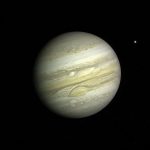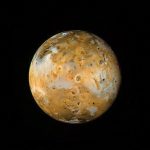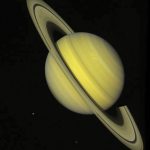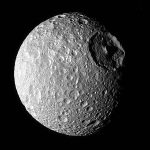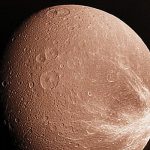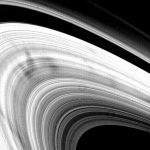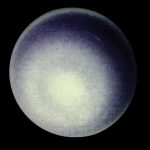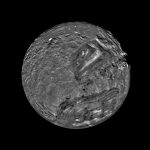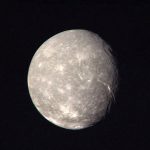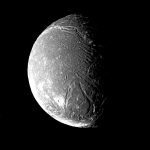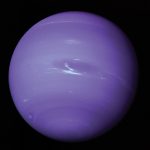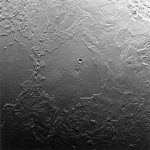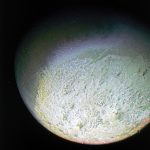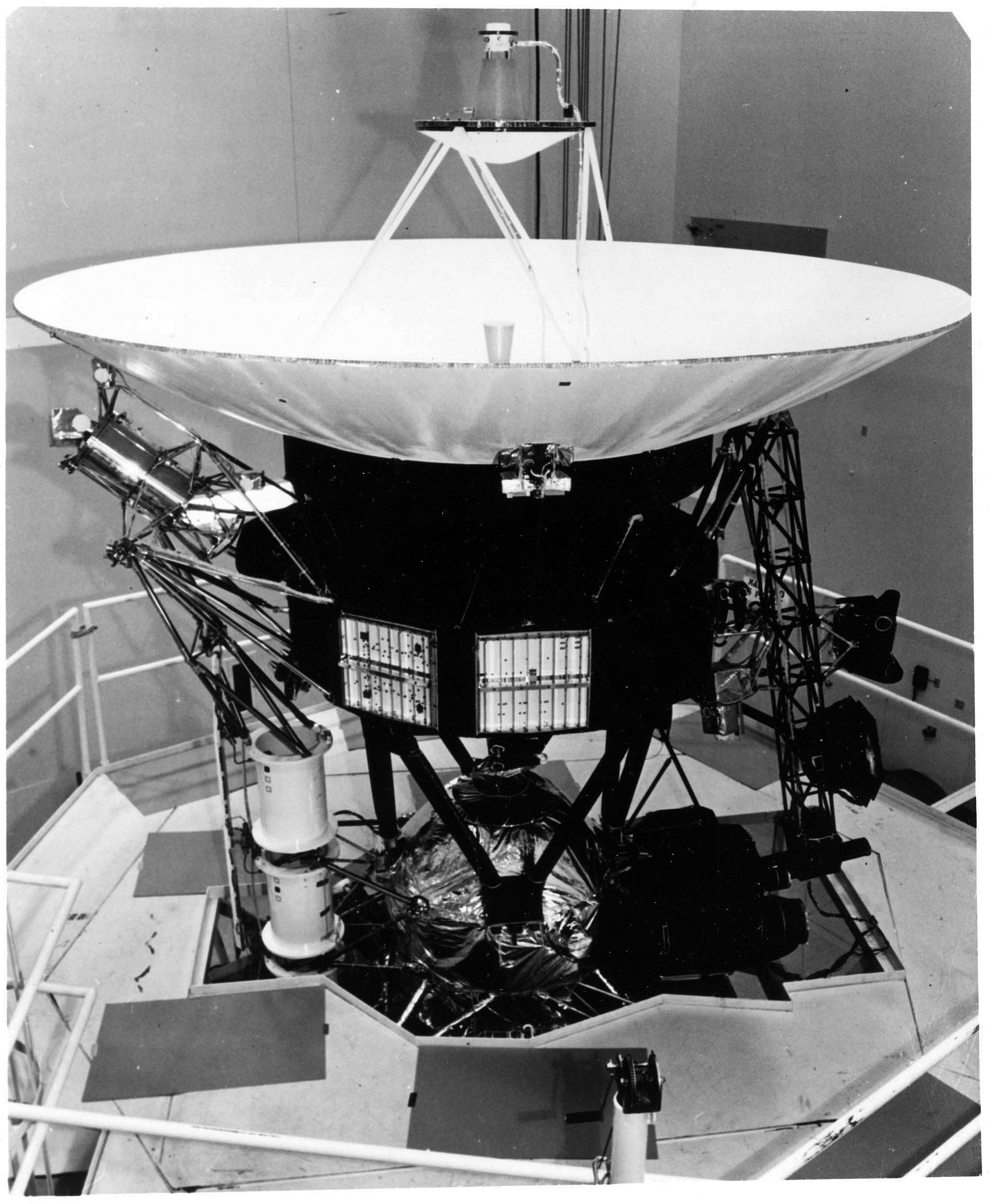
For more than thirty years, a pair of twin NASA spacecraft have been on an epic journey through the solar system. A journey that is arguably one of the greatest adventures in the history of mankind. They have travelled farther than any man-made objects ever have, and will soon leave our cosmic neighborhood and become the first man-made objects to visit interstellar space – the space between stars where our own sun has no influence.
Voyager 1 and Voyager 2 launched within weeks of each other in 1977 from Cape Canaveral Air Force Station in Florida. Their mission was to visit the giant outer planets of the solar system, a “grand tour” which took advantage of an unusual planetary alignment that happens only once every 177 years. The Voyagers would “slingshot” from planet to planet, using the gravity of one giant planet to push them towards the next planet, a technique known as a gravitational assist.
Their primary mission – to visit the giant outer planets – was a complete success. The Voyagers visited Jupiter, Saturn, Uranus, and Neptune – sending back to Earth valuable research data and images never before seen by human eyes in such detail. Voyager 2 is still the only spacecraft to have ever visited Uranus and Neptune.
The violent weather in the atmosphere of Jupiter, indications of an ocean beneath the cracked ice of Jupiter’s moon Europa, the details of Saturn’s rings, and a smoggy nitrogen atmosphere on Saturn’s moon Titan – all were just a few of the many discoveries made by the twin Voyagers.
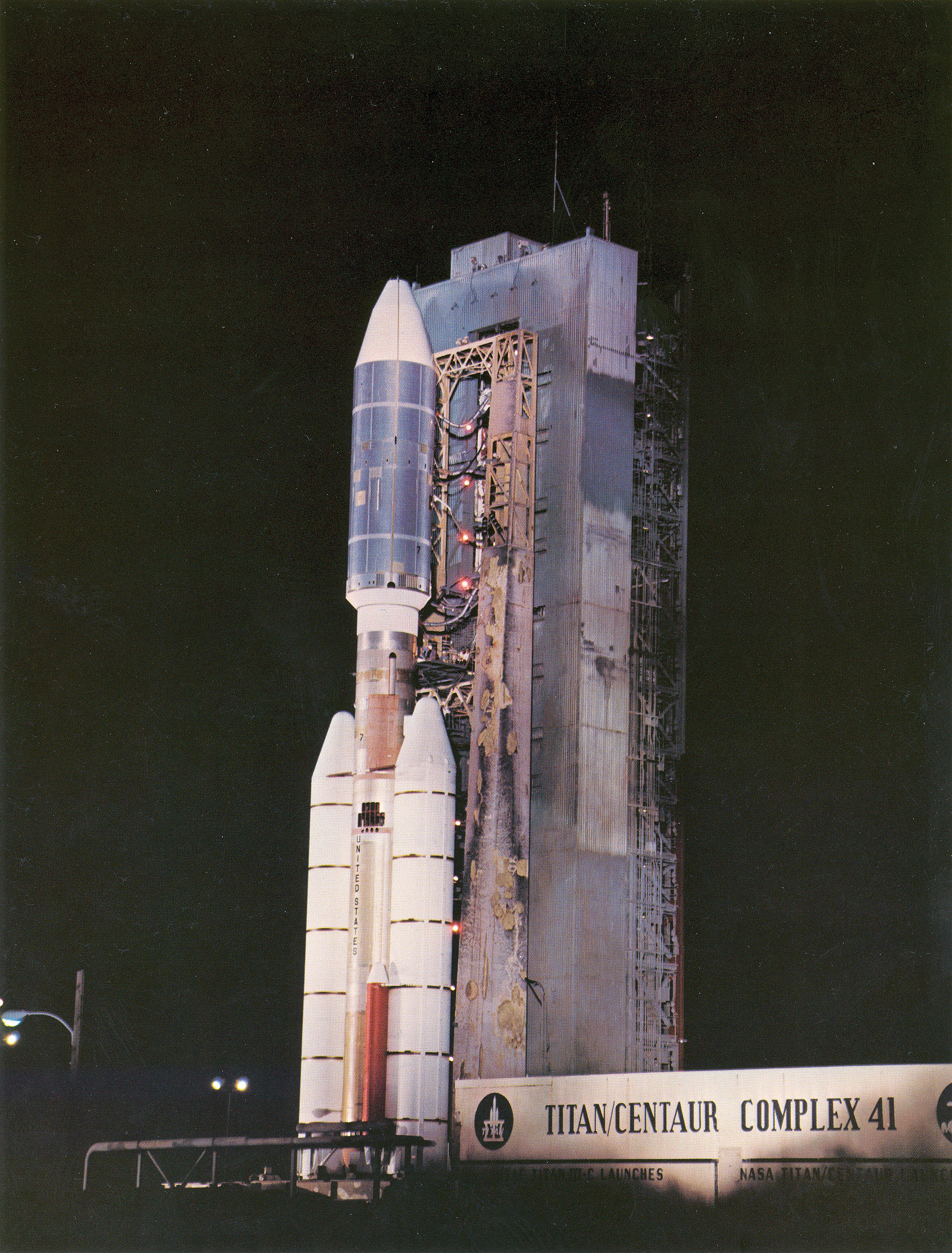
After leaving the realm of the planets, the Voyagers were given a new mission – the Voyager Interstellar Mission. They are now tasked with exploring the very edge of our known solar system, and beyond.
Although many of the science instruments onboard both space-craft are now dead, a handful of others are still active, and the Voyagers continue to send valuable information back to Earth – some 35 years after they left.
Voyager 1 has travelled the farthest, because it was launched from Earth on a different trajectory than Voyager 2. Voyager 1 is currently more than 11 billion miles away from Earth, speeding through the cosmos at over 38,000 miles-per-hour. The distance Voyager 1 has covered is so vast that astronomers do not actually measure it in miles, but in Astronomical Units, or AU. One AU is the average distance between the Earth and Sun, about 93 million miles. Voyager 1 is currently more than 123 AU from Earth, or 123 times further from Earth than Earth is from the Sun, and clearing over 3 AU every Earth year (365 days).
At these distances, radio signals from Voyager 1 take over seventeen hours to reach controllers here on Earth, and the round-trip light time from the sun is over thirty-four hours.
Voyager 1 crossed an area known as the “termination shock” and began its voyage through the heliosheath in December of 2004.
The heliosheath is the outer boundary of our solar system still dominated by the sun’s magnetic field and particles contained in the solar wind.
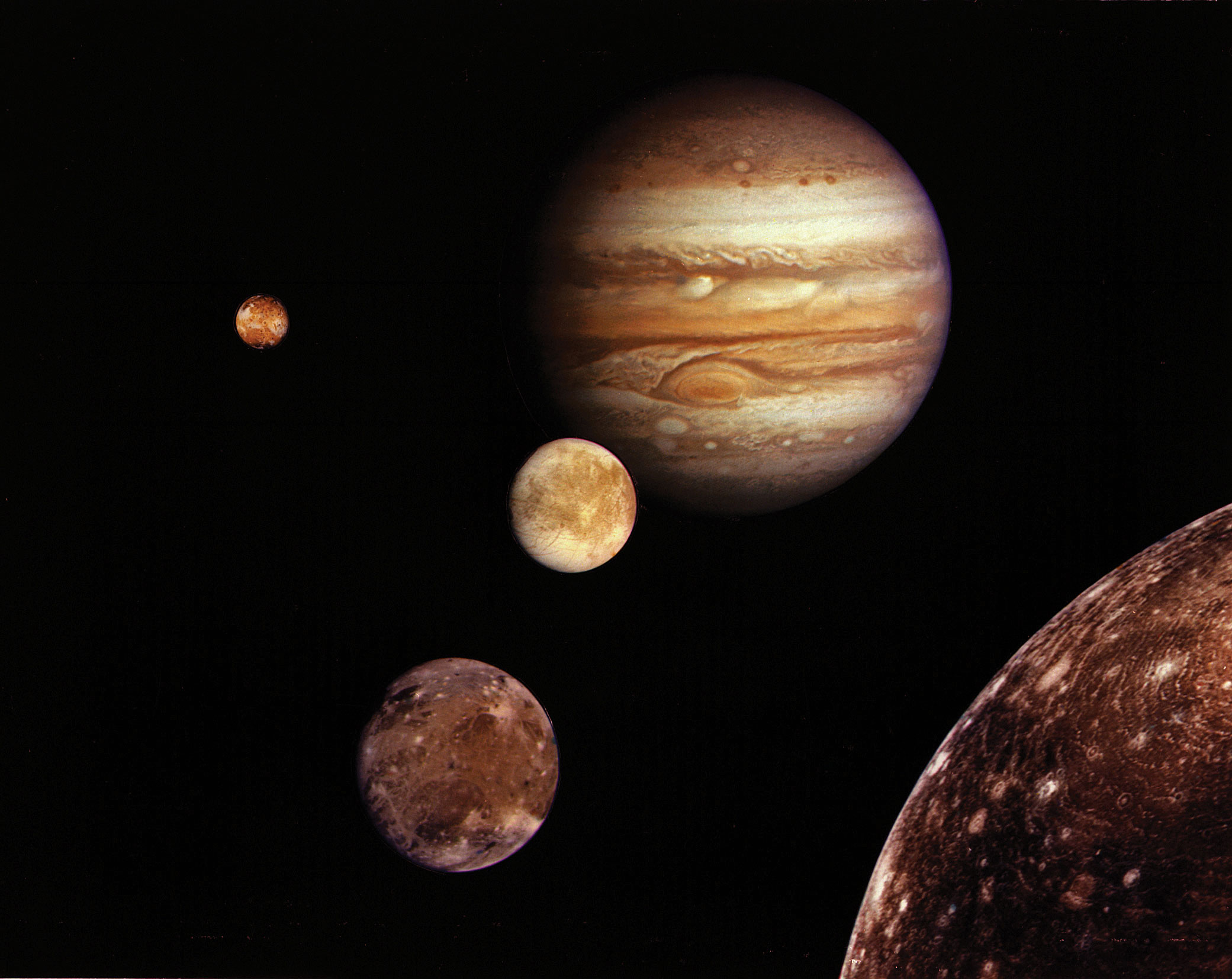
Although astronomers don’t know exactly just how wide the heliosheath is, and therefore cannot pinpoint exactly where the border between our solar system and interplanetary space is, they can see changes in the environment become more dramatic as Voyager 1 approaches the border, known as the heliopause.
In the eight years since Voyager 1 began its trek through the heliosheath, the spacecraft has encountered several dramatic changes in its space environment—all pointing to its eventual exit from our solar system into interstellar space.
The number of cosmic rays hitting the spacecraft continues to climb, and instruments on the spacecraft detected the supersonic solar wind dropped from 150,000 mph to zero as of last spring—held back from further expansion by the interstellar wind. During the last year the spacecraft has also seen energetic particles from the solar system decline by nearly 50 percent, while the detection of high-energy electrons from interstellar space has increased 100 fold.
The most recent data from Voyager 1, which was released by NASA just last month, shows the spacecraft is now pushing through a new region at the very edge of our known solar system – a “magnetic highway” that scientists feel is the final region before crossing into deep space.
This previously unknown (and unexpected) region at the edge of our solar system is where our sun’s magnetic field lines connect with the magnetic field lines of interstellar space. Particles from deep space are now streaming over Voyager 1 regularly, something that had not been seen consistently before.
The new data alone does not suggest Voyager 1 has reached interstellar space because the direction of the sun’s magnetic field lines has not yet changed, but the data does show the region Voyager 1 is traveling through is rapidly changing. The influence of the sun is becoming less and less, while the influence from interstellar space is growing stronger.
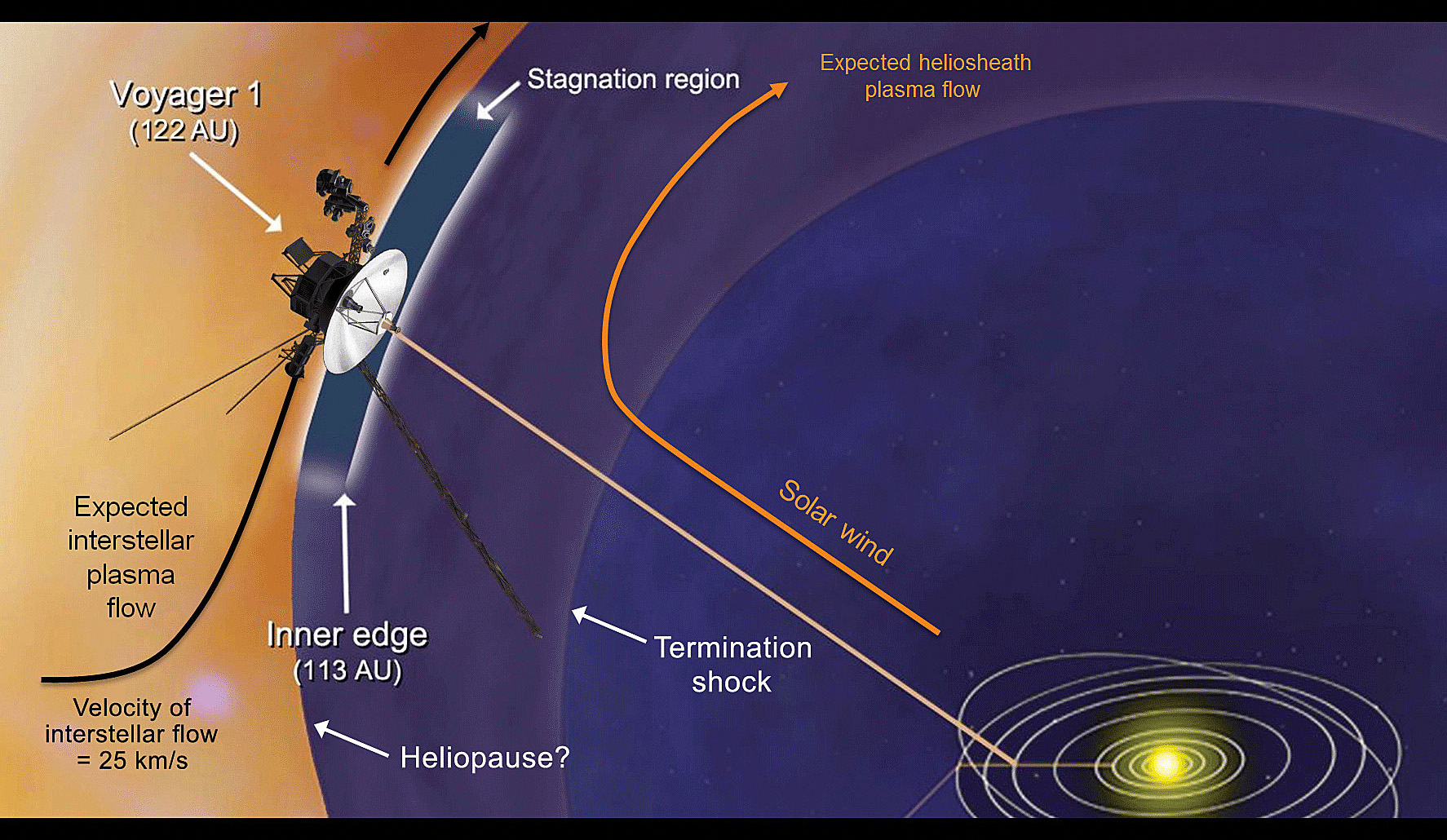
Astronomers expect to see Voyager 1 leave the solar system sometime between now and 2015. When that happens big changes are expected to be seen in the data sent back to Earth. For example, energetic particles from the sun will be few and far between, and the magnetic field around Voyager 1 will change direction from that of the sun’s magnetic field to that of the unexplored magnetism of interstellar space.
Although traveling slower, and thus lagging behind its cousin Voyager 1, Voyager 2 is currently traversing the solar system on a course which will eventually see it leave the solar system as well.
Both spacecraft are reported to be in good health, and have enough power and thruster fuel to operate until at least 2020, possibly until 2025.
The Voyagers should provide better data regarding what the space between stars and solar systems is like in a way no other spacecraft has ever been able to, simply because no spacecraft has ever actually travelled there.
When they run out of power and are no longer operable, they will continue to cruise through the cosmos indefinitely, carrying with them the famous golden record with pictures and sounds of Earth – an explanation of what Voyager is and who created it for anyone who may discover them.
Voyager 1 is not heading towards any particular star, and will not even come “close” to one for 40,000 years, when the spacecraft will pass within 1.6 light years (almost 10 trillion miles) of a star in the constellation Camelopardalis.
Voyager 2 will pass within 4.3 light years (25 trillion miles) of the brightest star in the sky, Sirius, 296,000 years from now.
Jupiter (Visited by Voyager 1 and 2)
Saturn (Visited by Voyager 1 and 2)
Uranus (Visited by Voyager 2)
Neptune (Visited by Voyager 2)
DID YOU KNOW?
Voyager’s fuel efficiency is impressive despite the launch vehicle’s 700 ton weight, Voyager 2’s travel distance of 4.4 billion miles to Neptune resulted in a fuel economy of 30,000 miles per gallon!

